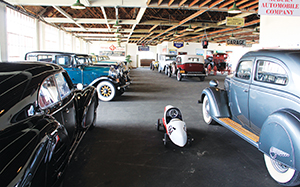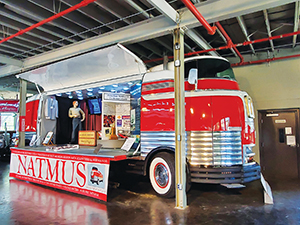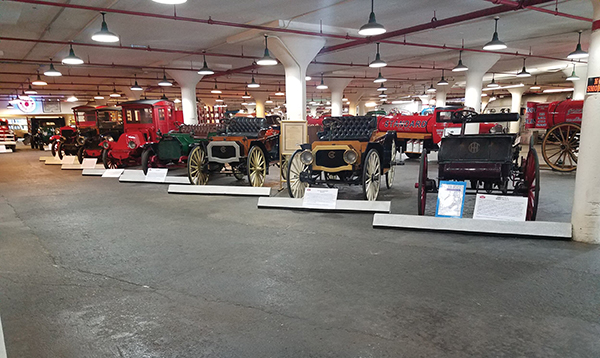National Auto and Truck Museum welcomes IMOA
The National Auto and Truck Museum, in Auburn, Ind., will be one of the visits during the annual IMOA 2023 car show Sept. 6-9.
The museum’s mission is to enrich lives and educate all generations through the acquisition and preservation of America’s automobile and truck history with buildings, vehicles, artifacts and literature.
Memorial galleries throughout the museum pay tribute to past leaders, contributors and mentors.
 More than 100,000 square feet of displays showcase fine examples of race cars, muscle cars from the 1960s and ’70s, more than 100 trucks, antique motorcycles and bicycles and much more.
More than 100,000 square feet of displays showcase fine examples of race cars, muscle cars from the 1960s and ’70s, more than 100 trucks, antique motorcycles and bicycles and much more.
Special buildings include the 1948 Valentine Diner, a full-scale gas station and automobile shops.
Auburn was home to many horseless carriage and motorcar manufacturing companies. Auburn is where E. L. Cord chose to expand an automotive empire with Auburn and Cord automobile factories. As you stroll through the remaining production buildings of the Auburn Automobile Company, you can almost feel and hear the excitement of the designers and mechanics working to create some of the world’s finest automobiles.
The Service and New Parts Building and the L-29 Cord Building were declared a National Historic Landmark in 2005. The original factory buildings that house The National Automotive and Truck Museum represent more than 130 years of transportation manufacturing.
 The Service\Parts Building was built in 1923 and was used for test-driving automobiles, factory service and distribution of parts to distributors and dealers all over the world.
The Service\Parts Building was built in 1923 and was used for test-driving automobiles, factory service and distribution of parts to distributors and dealers all over the world.
If a person lived near Auburn and wanted his automobile serviced at the factory, this would be done in the Service Building. When the 810-812 Cords were test driven and guaranteed to do over 100 mph., they were tuned, prepared and tested from the Service Building. Each car was provided with a plaque signed by race driver Ab Jenkins, indicating how fast the car had been driven at the factory.
The L29\Experimental Building was built in 1928-29 and was the first new building that E.L. Cord constructed after he assumed management of the company.
Intended for the assembly of the L29 Cord, the upper level of this building was actually used to prepare the L29s for shipment after they were assembled on the Auburn line. The lower level was used for experimental cars and the construction of prototypes. The first hundred 812 Cords were hand built on the lower level. Fred Duesenberg, Gordon Buehrig, Alan Leamy, Herb Snow and other prominent designers, engineers and builders used the lower level for their creations.
The L29 Cord was the first production front-wheel drive automobile in America. The 810-812 Cord was a revolutionary design that changed automotive history. It was the first car with unibody construction, concealed gas cap, disappearing headlights and many other innovations.
It is the mission of NATM to exhibit cars that have been built in the tradition of the Auburn Automobile Company. These include outstanding examples of postwar cars.
 Trucks exhibited range from 1907 to modern concept trucks. We recognize the truck heritage of Auburn and its McIntyre Company, which built a full range of trucks from 1907 until about 1915.
Trucks exhibited range from 1907 to modern concept trucks. We recognize the truck heritage of Auburn and its McIntyre Company, which built a full range of trucks from 1907 until about 1915.
Both buildings are also significant from an architectural standpoint. The Service Building is built with a lattice arch roof system that provides a 70-foot clear span using 2” x 6” lumber. The L29 Experimental Building features monitor windows that provide maximum natural light.
When the windows are open by pulling the chains, an early type of “air conditioner” results in that air is pulled from side windows up through the Monitor windows to provide fresh air and a slight breeze.
The Eckhart Building, located near the entrance of NATM, is where Eckhart buggies were made. As the Auburn Automobile Company evolved, the earliest cars were built in this building.
The transition from buggies to automobiles is interpreted in the Eckhart Building. This building originally sat on Seventh Street in Auburn, but was relocated here for preservation.



